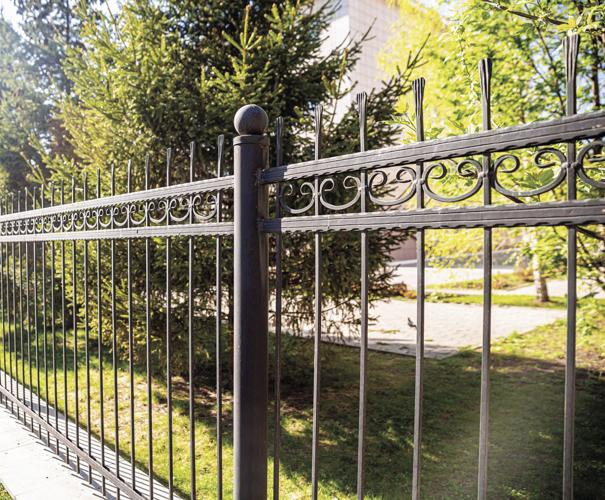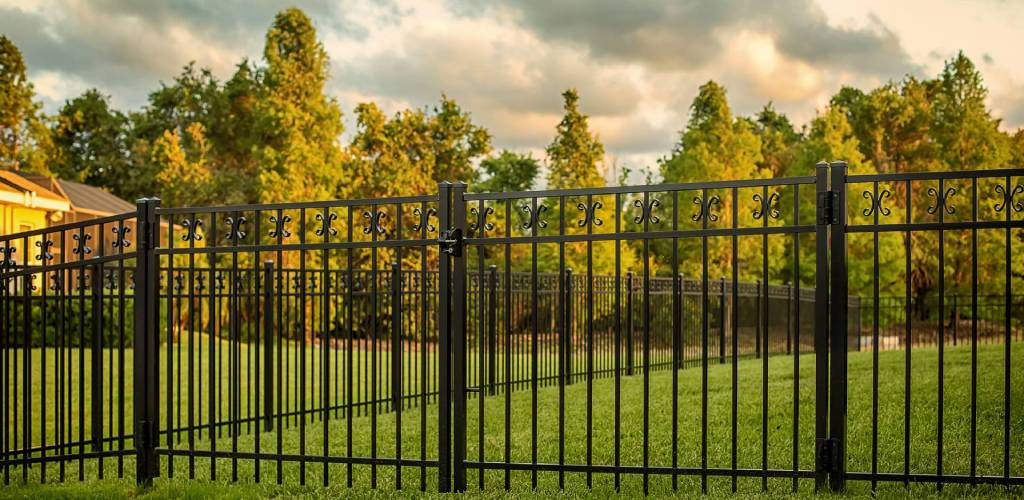Featured

Wood fencings are a prominent selection for property owners as a result of their all-natural charm and flexibility. To keep your fencing looking terrific and functioning well, routine maintenance is necessary. One of one of the most vital tasks in fence maintenance is determining how frequently to paint or discolor the timber. The appropriate upkeep schedule can help shield your fencing from the components, stop damages, and extend its lifespan. Here's a guide to help you identify when it's time to repaint or stain your wooden fencing.
Variables Influencing Paint or Tarnishing Regularity. A number of vital factors identify exactly how usually you should paint or tarnish your wood fencing. These consist of the sort of wood, the environment in your region, and the degree of direct exposure your fencing has to the components.
- Environment and Weather Issues. The environment where you live plays a significant duty in just how promptly your fencing will certainly use down. Extreme weather such as extreme sunlight, heavy rainfall, or freezing temperatures can accelerate the deterioration process.
Sunny Climates: In areas with great deals of sunlight, UV rays can trigger the timber to dry, fade, and split. Therefore, you might require to repaint or restain your fence every 2 to 3 years to avoid damages. Rainy or Humid Areas: In areas where rainfall and moisture are constant, wooden fences take in wetness, which can bring about warping, decomposing, or mold development. Regular discoloration is necessary in these areas, commonly every 1 to 2 years. Cold Climates: Icing up temperatures and snow can stain or cause the paint to peel off. If your area experiences cold winter seasons, you may need to revitalize the surface every 3 to 5 years to maintain your fence excellent condition. 2. Type of Wood. The wood varieties made use of for your fencing will additionally determine the frequency of paint or discoloration. Woods tend to be extra durable than softwoods, and each kind of wood responds in a different way to repaint or discolor.
Cedar and Redwood: These timbers are naturally resistant to rot and bugs, yet they can shed their color in time due to UV direct exposure. Staining or securing these kinds of wood every 2 to 3 years helps preserve their look. Pine and Fir: These softwoods are a lot more susceptible to wetness damages and call for even more constant maintenance. You may require to restain or paint these fences every 1 to 2 years to maintain them protected from the elements. Pressure-Treated Wood: While pressure-treated timber is made to stand up to rot, it still requires to be tarnished or sealed to stop dampness absorption. A fresh layer of tarnish or sealer may be required every 2 to 3 years. 3. Tarnish vs. repaint. Whether you repaint or stain your fencing can significantly influence the upkeep schedule.

Paint: Repaint provides a solid layer of protection that obstructs wetness and UV rays. It can peel, crack, or discolor over time, particularly with long term exposure to the elements. Commonly, a painted fence needs to be painted every 3 to 5 years. Discolor: Discolor soaks right into the timber and supplies a more natural appearance while still using security. Stained fencings tend to reveal use faster than painted ones, as the discolor can fade or remove. You will likely require to restain your fencing every 2 to 3 years, relying on the exposure to sunlight and rainfall. 4. Noticeable Indicators of Put On. While a basic upkeep routine is valuable, you must additionally watch on the problem of your fence to figure out when it's time for a fresh coat of paint or discolor. Look for these indications:
Discoloring or Discoloration: If your fence has actually lost its initial color or has actually become weathered and gray, it's time to reapply a tarnish or repaint to recover its appearance. Breaking or peeling off: If the paint or stain begins to fracture or peel off, it's a clear sign that the protective layer is no more doing its job. This can cause water damage, so it is very important to address it asap. Water Absorption: Conduct a basic water examination by splashing some water onto the surface of the fence. The fencing is still secured if the water beads up. If the water takes in, it's time to restain or repaint. 5. Proper Upkeep Techniques. For the very best results, it's crucial to prepare the wood correctly before painting or staining. Start by cleansing the fencing to eliminate mold and mildew, mold, or dirt. Fix any type of damages, such as cracks or loosened boards, to ensure the fencing remains in good condition prior to using a fresh layer.

Pick a dry, moderate day for painting or tarnishing to stay clear of the finish drying also quickly or erratically. Always apply paint or stain according to the manufacturer's instructions, and permit sufficient drying out time in between layers.
Conclusion. In basic, wood fencings need to be painted or tarnished every 2 to 3 years, depending on the environment, kind of wood, and direct exposure to the aspects. Whether you pick to discolor or paint, normal upkeep will protect your fence from the weather and maintain it looking attractive for years to come.
Latest Posts
Why Consistent Auto Maintenance at Montclare Auto Repair Saves You Money
Published en
1 min read
Uncover the Premier Auto Repair Offers in Montclare, Chicago
Published en
1 min read
Reasons Routine Vehicle Maintenance at Montclare Auto Repair Saves You Money
Published en
1 min read
More
Latest Posts
Why Consistent Auto Maintenance at Montclare Auto Repair Saves You Money
Published May 30, 25
1 min read
Uncover the Premier Auto Repair Offers in Montclare, Chicago
Published May 25, 25
1 min read
Reasons Routine Vehicle Maintenance at Montclare Auto Repair Saves You Money
Published May 25, 25
1 min read